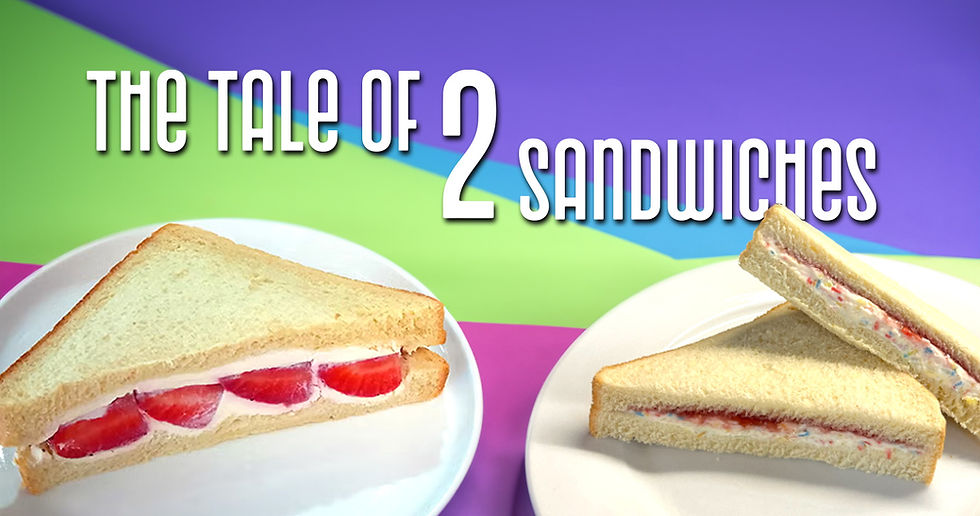From Bland to Brand: What Oatly's $10 Billion Rebrand Can Teach You
- Rhys Bennett
- Apr 17
- 3 min read

We've all seen those quirky oat milk cartons, emblazoned with bold, almost confrontational slogans. Oatly. The name itself is simple, direct, almost… functional. And that, in a nutshell, was the brand's identity for over two decades. Born from Swedish scientific research in the 1990s, Oatly was a practical solution for those with lactose intolerance. Useful? Undeniably. Memorable? About as thrilling as a plain cracker.
For years, Oatly existed in a quiet corner of the health food market, a niche product for a specific need. It was the sensible choice, the reliable alternative. But it lacked… spark. It wasn't a brand that ignited conversations or captured imaginations. It was the oat milk your mum bought, not the one you Instagrammed.
Then, in 2012, the narrative took a sharp, unexpected turn. Toni Petersson stepped into the CEO role, and what followed wasn't just a rebrand; it was a full-blown personality transplant. Oatly shed its beige cardigan and sensible shoes for a leather jacket and a rebellious smirk. It went from being a sleepy health drink to a cultural juggernaut, a brand that people didn't just consume, they talked about.
So, what was the magic formula? How did Oatly pull off arguably one of the most effective and talked-about rebrands of all time? Let's break down the key ingredients of their audacious transformation:
The Carton as Canvas: Turning Packaging into Punk Rock Media
Short on a hefty marketing budget? Oatly saw an opportunity where others saw a mere vessel. The packaging became their primary communication channel, a blank canvas for their loud, often weird, and always self-aware messaging. Forget glossy lifestyle shots; Oatly's cartons were plastered with witty slogans, hand-drawn illustrations, and direct, often sarcastic, commentary on the dairy industry and even themselves. This wasn't just packaging; it was a walking, talking billboard, grabbing attention on crowded shelves with its sheer audacity. It was disruptive, it was different, and crucially, it was shareable.
In-House Anarchy: Ditching the Suits, Embracing the Soul
Petersson made a conscious decision to steer clear of traditional marketing agencies. Instead, he cultivated an in-house creative team that operated more like a collective of artists than a conventional advertising department. This fostered a unique brand voice – authentic, unfiltered, and brimming with personality. Their campaigns weren't polished and focus-grouped to oblivion; they were raw, honest, and often delightfully awkward. This genuine voice resonated with consumers who were increasingly cynical of corporate messaging and craved brands with a real point of view.
Picking a Fight (and Making it Fun): The Art of the Provocation
Oatly didn't just politely offer an alternative to dairy; they went straight for the jugular (or should we say, the udder?). Their marketing directly challenged the dairy industry, framing traditional milk as outdated and environmentally problematic. This wasn't just about selling oat milk; it was about positioning themselves as the progressive, conscious choice. While some found it confrontational, it undeniably generated buzz and positioned Oatly as a brand with conviction, unafraid to ruffle feathers. This bold stance, while risky, gave them a clear identity and attracted consumers who aligned with their values.
Winning the Influencers Who Actually Mattered: The Barista Strategy
Instead of sinking vast sums into traditional advertising channels like TV commercials, Oatly shrewdly targeted the gatekeepers of cool: coffee shop baristas. They understood that baristas, the trusted artisans of the coffee world, held significant sway over consumer choices. By getting their oat milk into the hands of these influencers, they created organic adoption. If your cool, knowledgeable barista recommended Oatly, you were more likely to try it, and then, crucially, to buy it for your own fridge. This grassroots strategy proved far more effective than a generic ad campaign.
The Proof is in the (Oat) Pudding:
Fast forward ten years, and the results speak for themselves. Oatly has gone from a relatively unknown Swedish health drink to a global phenomenon, boasting nearly $800 million in revenue and a staggering $10 billion valuation at its peak. Their success isn't just about having a decent product (though they do). It's about the audacious rebrand that injected personality, purpose, and a healthy dose of rebellion into a previously unremarkable brand.
The takeaway for businesses, big and small? A good product is a solid foundation. But a bold brand with a distinct voice, sharp and unconventional creativity, and a genuine emotional connection with its audience? That's the magic formula that doesn't just get you into the fridge – it keeps you there, sparking conversations and building a loyal following that transcends mere consumption. Oatly didn't just sell oat milk; they sold a belief, a personality, and a whole lot of attitude, proving that sometimes, being a little bit "weird" is the most brilliant strategy of all.



